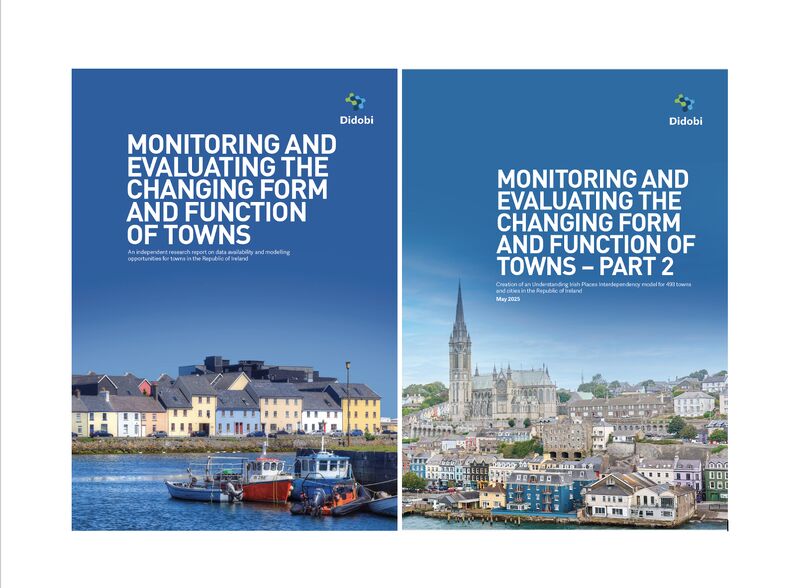The comings and goings of our shopping and leisure destinations!
Time flies and so I have to apologise for not getting this to you all quicker. You may or may not have seen that we published some data around openings and closures of retail and leisure businesses across Great Britain in 2013. We looked at chain retailers in partnership with PwC and then we looked at Independents with BIRA (British Independent Retailers Association). We then wrapped it all together with a summit courtesy of Hogan Lovells in London where we had an excellent chairman in Damian Wild, editor of Estates Gazette along with a panel of experts – Mathew Ditchburn from Hogan Lovells, Michael Weedon from BIRA, Jonathan Reynolds from University of Oxford and Simon Danczuk the MP for Rochdale. Details of what they said and a summary can be found on the LDC website and of course you can purchase the full report for £250 +VAT.
The key takeaways were as follows:
- Independents have continued to grow in 2013 (+0.69%) albeit at a much slower rate than in 2010 (+4.01%)
- Multiple retailers have continued to exit high streets in 2013 (-0.57%) but significantly less than in 2012 (-2.66%)
- Comparison goods shops continued to decline in town centres in 2013 (-1.31%/-800 shops) led by the multiples (-1.81%)
- Convenience retail (+2.71%) and Leisure uses (+1.09%) are the main growth drivers in town centres with independents driving convenience (+3.09%) and multiples driving leisure (+2.25%)
- Services are marginally up (+0.53%) led but independents (+1.87%) with multiples in decline (-1.72%) in town centre
- South West towns showed most growth in occupation (+221 units) in 2013
- Greater London showed most decline in 2013 (-168 units)
- Retail Parks growing occupation faster (+3.11%) than high streets (+o.26%) and shopping centres (+0.49%)
On multiple retailers:
From a net increase in 2009 of 1.2%, multiple retailers have for the third consecutive year shown a decline in their store numbers from -0.25% in 2011;-2.7% in 2012; and -0.57% in 2013. Year-on-year, the net reduction in the number of stores fell by nearly 80%- from 1,779 in 2012 to 371 in 2013.
Photographic shops, women’s clothing and fashion shops, banks, video libraries, travel agents, mobile phone outlets, recruitment agencies and shoe shops have been amongst the hardest hit in 2013. Charity shops, convenience stores, betting shops, cheque cashing and coffee shops bucked the trend by showing growth during the year.
Mike Jervis, insolvency partner and retail specialist at PwC, observed:
“The trend of net closures for 2013 is encouraging and signals a return in retail confidence. The well-documented insolvencies of Jessops, HMV and Blockbuster, together with other solvent restructurings, account for most of the highlighted closures. The recycling of shops from these estates, especially into convenience stores, has been the biggest positive trend in 2013.
“The key to permanent growth for those multiples opening stores is to ensure that their locations are chosen carefully – where they do not compete with their existing stores or simply add to an already crowded environment for their particular offering. We have seen this happen in recent years in several sectors, including ladies fashion and money lending.”
Mark Hudson, PwC’s retail consulting leader, commented:
“2013 saw a continuation of the high street metamorphosis driven by consumers changing behaviour as they adopt the newer digital channels and technologies available to them. Casualties have been in those areas where we have seen a rapid shift online – travel, fashion, digital photography and DVDs, and banks. Those trends will continue.
“The pace of net closures has slowed this year, driven by a dash for convenience stores, cheque cashing, coffee shops and betting shops plus the usual growth in charity stores – it remains to be seen how close to capacity these sectors are, especially as we start to climb out of this recession. As Christmas trends demonstrated, consumers are only at the start of the digital journey. Even though we may be on an upturn we expect the pattern of net store closures to continue well into the future.”
My comments were as follows:
“2013 was a turning point for retail in town centres across Great Britain. The data reflects the ongoing structural changes taking place in our town centres and the continuing consolidation of ‘anchor stores’ into fewer but larger shops, which are either in megamalls or out-of- town retail parks.
“The oversupply of shops nationally has resulted in reduced rents and created opportunities for what many perceive as less desirable shops- betting shops, cheque cashing and tattoo parlours) to fill the vacuum left by the retreating ‘anchor chains’.”
Independents – fascia with less than five units nationally excluding international chains.
Traditional independent shops and leisure outlets continue to increase in Britain’s town centres whilst the chains continue to retreat. Contrary to popular belief independent high street businesses have continued to grow every year since 2009 albeit in smaller numbers as the years have passed. In 2010 the net change (openings less closures) in stores grew by 4% and in 2013 this growth reduced to 0.7%. Comparison goods (non perishable goods) retailers have been the exception to the rule and have reduced from being 36% of the total independents offer in 2010 to just 31% in 2013.
Michael Weedon, Deputy Chief Executive of the British Independent Retailers Association, commented:
“Independent Tailors, Bakers, Barbers, Grocers, Hairdressers, Confectioners, Coffee bars are on the rise as towns see them replace Fashion and Shoe shops, Jewelers, Newsagents and Booksellers. As chains cut their links one by one with high streets and Comparison shops that are the last stop in worldwide supply chains of finished goods show year-on-year decline, our towns are showing signs of reverting to older models of economic activity, where they serve the needs of physical customers in physical stores, alter their clothes, style their hair and (OK, not even a little bit traditional) mend their broken iPhones.
The churn is huge, with more than 15,000 independents closing in 2013 – but nearly 16,000 opening their doors for the first time. The real organic fertility of the high street is illuminated by the LDC data. The margin of growth is tantalizingly fine, with net growth in independents of only 762 overall last year. But this was the third year of this kind of growth and this kind of change. It is not a fluke. It is consistent. It is real and it has reduced the LDC shop vacancy rate to below 14% for the first time since 2010.
Give an entrepreneur a sniff of an opportunity and a chance of a profit and they will create businesses and fill empty units. Government’s role in this is to remove obstacles, dismantle barriers to the profitability of small shops and clear the way for them to lead our towns into a future that incorporates the best of the past.”
My comments were;
“Against all odds Independent retail and leisure businesses have continued to grow in our town centres. Whilst growth has slowed fourfold since 2009, the key fact is that there continues to be vitality and entrepreneurship on our high streets. Chain retailer activity has been the reverse with more closures than openings happening since 2012 and with more forecast to come. A 3% growth in 2010 has moved to a -0.6% decline in 2013.
This growth is not across all sectors as we have seen Internet sales rise to 13% of all retail sales, the significant growth of retail parks and shopping centres (more than 2,000 of them) and the move of the supermarkets into non-food retail and convenience store formats. Linked to a recession and the significant fall in consumer spend then change is to be expected. While over 2,600 independent comparison goods retailers have shut up shop we have seen nearly 4,500 independent services shops open their doors with the majority of growth coming since the second half of 2011.
The propensity of independents to survive and thrive varies massively by place, as does the churn rate with over 31,000 independents opening and closing in 2013 alone. Clearly the appetite is there and increasingly independents are adjusting to the new challenges of the total retail world (online and offline) as well as the competition they face from their big ‘chain’ brothers. Independents are an important part of every town and are the one thing that drives diversity in what has become a homogenous world.”
The final thought I shall leave you with to ponder is a quote from Charles Darwin as it very much reflects practice in many departments and firm of this fine country!
“Ignorance more frequently begets confidence than does knowledge: it is those who know little, not those who know much, who so positively assert that this or that problem will never be solved by science.” Charles Darwin, The Descent of Man






Leave a comment: